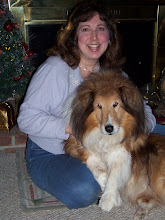It's the birthday of the filmmaker and actor Charlie Chaplin, born in London (1889). He started out as a vaudeville actor in a comedy troupe. When Chaplin arrived in Hollywood, he was shocked to see how little rehearsal went into each movie. Hollywood directors at the time filmed each scene in a single take, refusing to waste money on extra film. Chaplin tried to get used to the Hollywood style, and he took all the jobs he could get, saving almost all the money he made. But he was disgusted at the quality of the movies.
The camera often wasn't pointed in the right direction to capture his movements, and many of his favorite moments ended up on the cutting room floor. At the end of five months, he asked the producer if he could direct his own movie, and he put up $1,500 of his own savings as a guarantee against losses. That year, 1914, Chaplin directed, wrote, and starred in 16 films in six months. It was that year that he debuted his most famous character: the "little tramp," who's always beaten down by life, always the butt of the jokes, but who never gives up his optimism. The character made Chaplin a star, recognized around the world.
When I was a graduate student at UCLA, I took a course in the history of Charlie Chaplin It was taught by Professor Epstein (now deceased) who actually grew up next door to Chaplin in Beverly Hills (on Tower Drive, I believe.) So the class not only saw all of Chaplin's films, including rare shorts that are now obsure or destroyed, but we also had the delightful privilege of hearing personal anecdotes and stories about Chaplin's comings and goings, guests and dalliances.
Professor Epstein recounted how Chaplin kept to himself, for the most part, except when escorting a bevy of beauties (not all at once) to his house at all hours of the day and night. Or how he wrote in the backyard or wandered his acreaged property in his pajamas. Epstein was a boy at the time, at the height of Chaplin's popularity in the States. Then came trouble with the House Un-American Activities Committee, all sorts of false allegations about Chaplin being a socialist (I think it was pure jealousy and envy, really) and his departure and exile to Switzerland.
A few years ago, I read an autobigography about Chaplin, & it said that shortly after they moved to Vevey, Chaplin sent his younger (by about 32 years) wife, Oona O'Neill, back to Beverly Hills to close up the house and withdraw his funds which she had sewn into the lining of her full-length mink coat. He was a dreamer, a director, a writer, and a creative genius, bar-none. He was and is my hero and one of my favorite people -- as a story-teller, an artist and humanitarian of all times.

No comments:
Post a Comment